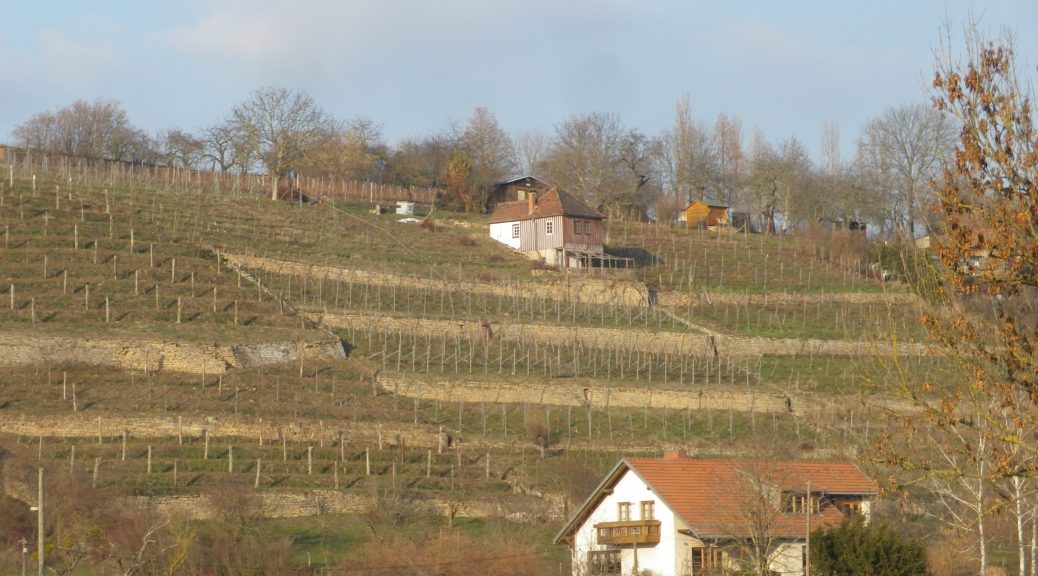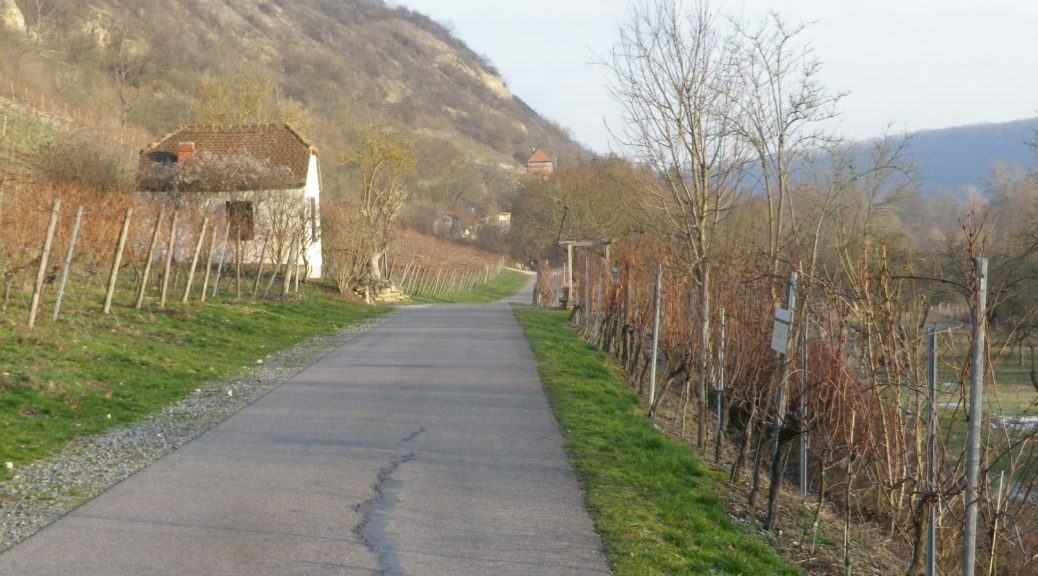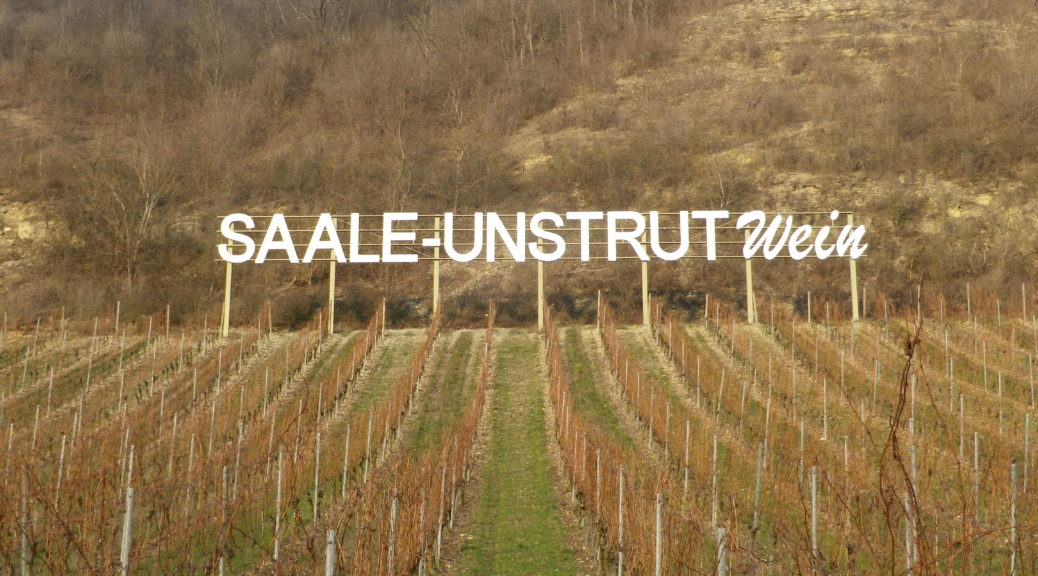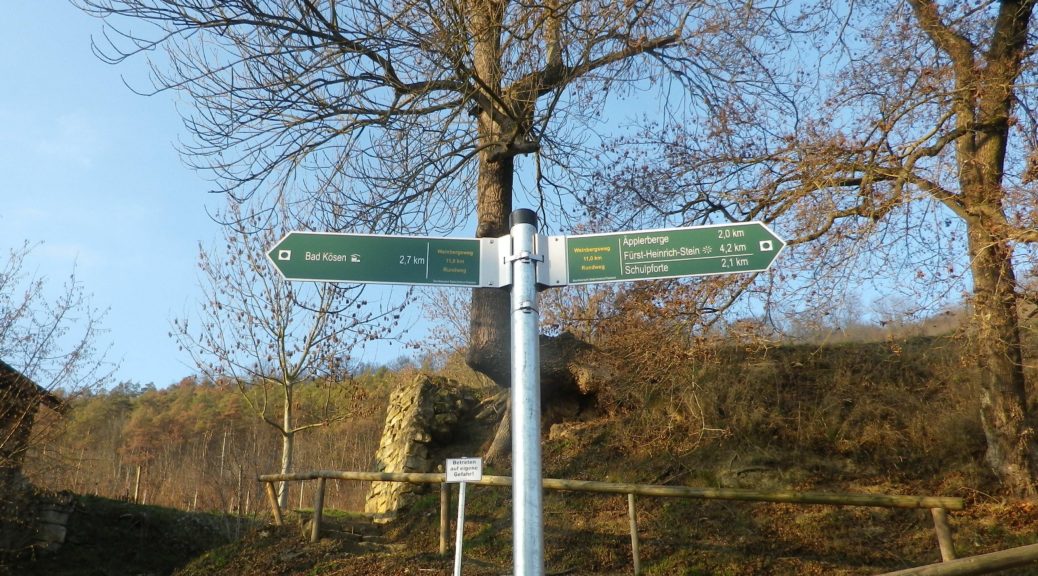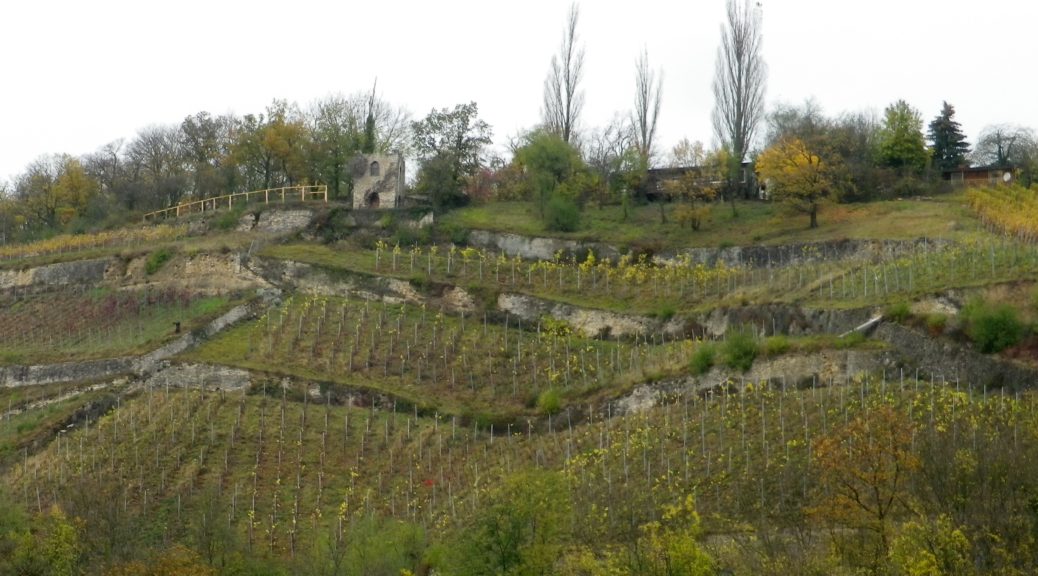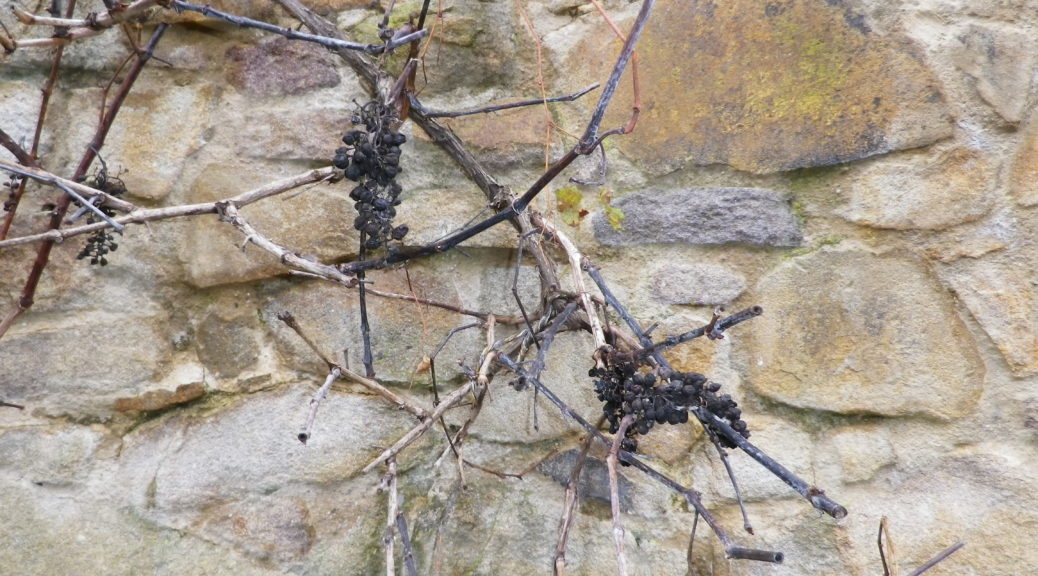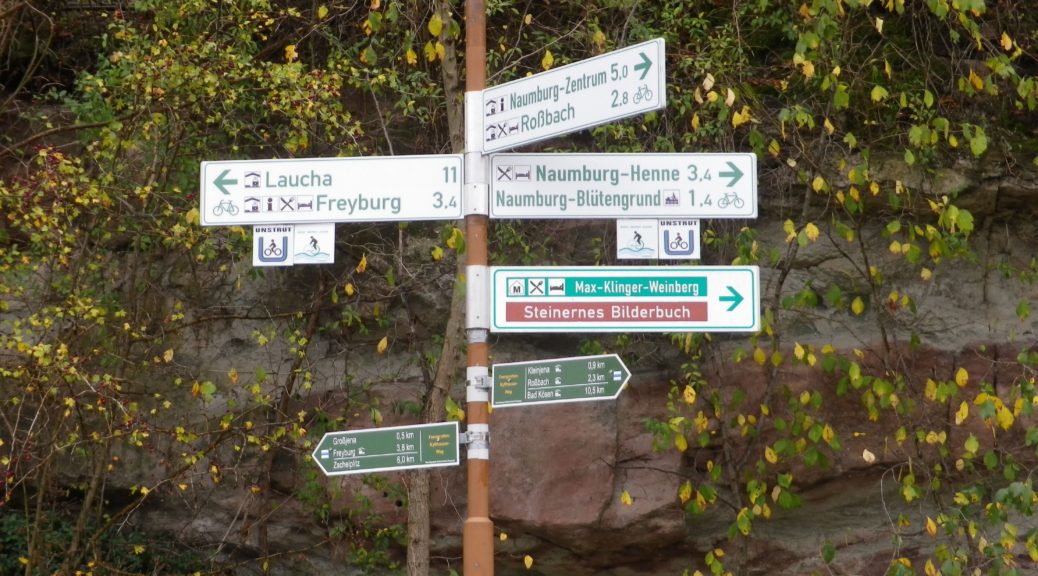Tag Archives: Saale-Unstrut
A Great Hike in Bad Koesen
My second trip to the Saale-Unstrut wine region, following my disastrous first trip (see here), occurred in the middle of January. My destination this time was the Weinbergsweg circuit trail. This hike proved a great, easy, family-friendly, circuit trail through vineyards, town and wooded areas, following along the Saale River as it circles through and around Bad Koesen in Saxony-Anhalt, Germany.
I began my hike by following the river. It was a lazy, but very scenic stretch along the Saale. This section also had several pubs and taverns, with outdoor seating overlooking the river. Ideal for a lovely summer afternoon or evening, but usually not available in winter. Vineyards were on the left, and flat, alluvial fields on the right.
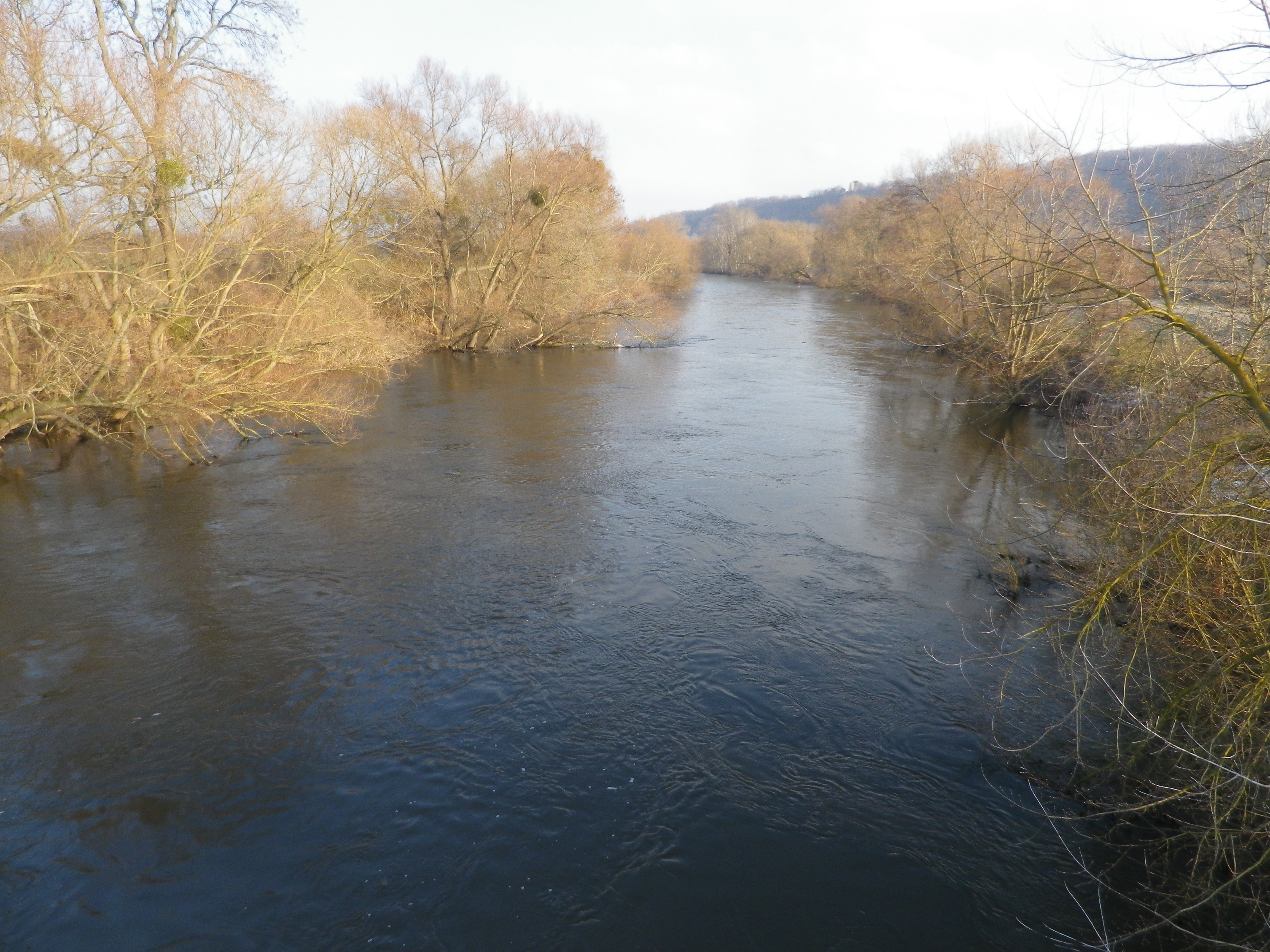
Wine Notes: Saale-Unstrut
What I Learned
Vineyards have grown along the Saale and Unstrut rivers for over 1000 years now, from a modest start at Memleben Abbey in 998 A.D.. Vines now cover about 770 hectares in the Saale-Unstrut Region. The vineyard landscape is characterized by hills of shell limestone and variegated sandstone soils, often terraced, contained in places by centuries-old dry-stone walls. Sited on the 51st degree of latitude, it is the northernmost designated quality wine region in Germany. In spite of its northerly position, it receives more sunshine than Trier, in the Moselle wine region but less than Freiburg, in the southern Baden wine region in the Rhine River Valley.
The Saale Unstrut region extends over three German states: Saxony-Anhalt (639 hectares), Thuringia (108 hectares), and a real northern outlier in Brandenburg (by Potsdam) (8.4 hectares). No other German wine region covers such a number of German states.
Weinbergsweg: Trail in a Nutshell
Trail Name: Weinbergsweg
Trail Type: Mid-distance circuit; well-maintained and much of it paved; marking on the trail good
Length:
Total – 10.2 kilometers/6 miles
Convenient to: Bad Koesen (see comments below), or Naumburg, Saxony-Anhalt, Germany
Marking:
Rectangular signs with green background and white lettering “Weinbergsweg” Below is an older version of the signage, still found in places, and the feature photograph above displays the newer signage.
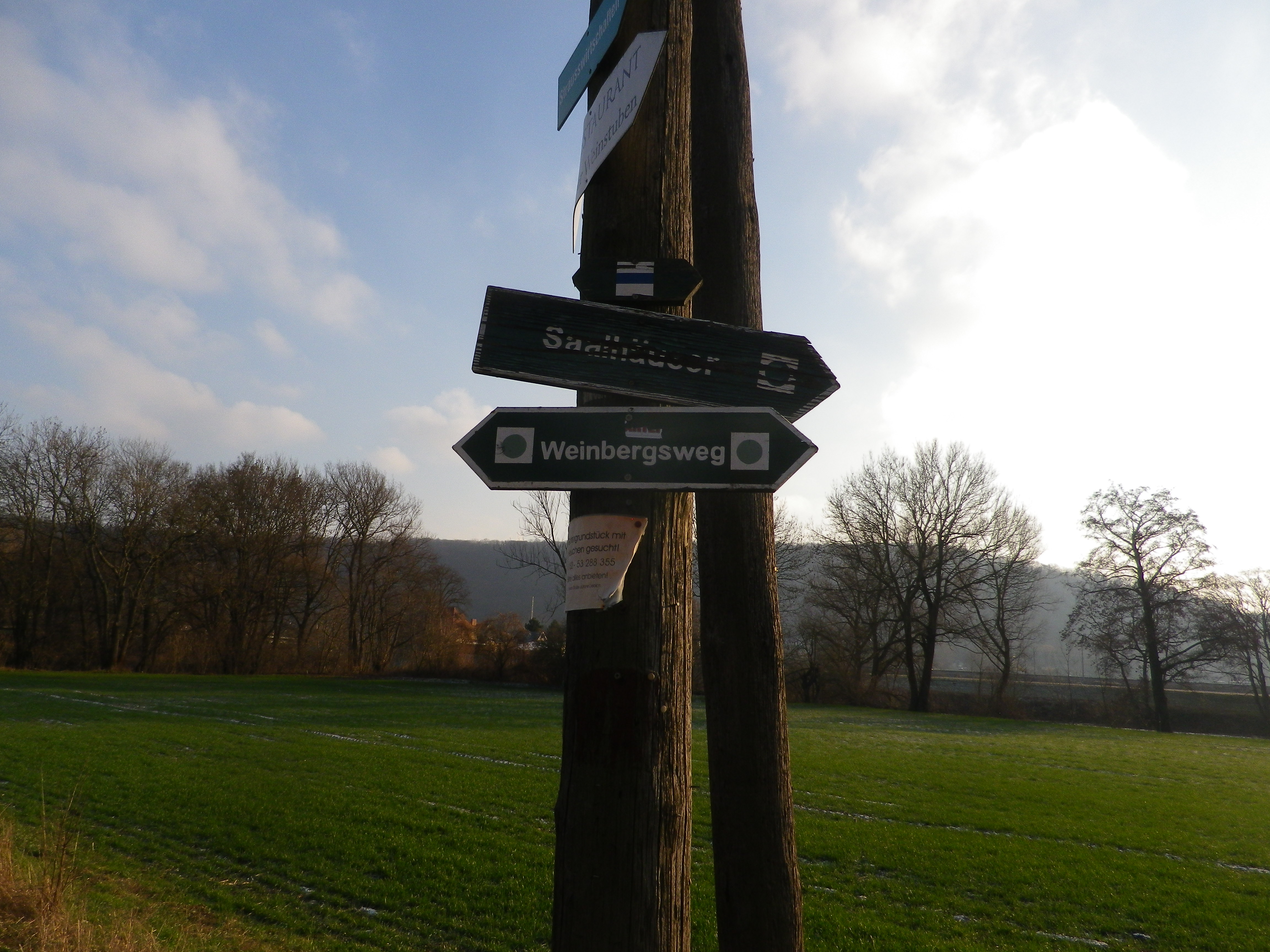
The Hike That Wasn’t
This may be the shortest post on record. Minutes away from Weimar, I gave a mighty tug on my luggage, stubbornly stuck under the train seat, only to have my knee, not my backpack, give way. Going down, using an old Anglo-Saxon cognate that caught the attention of the many modern-day German-speaking passengers, they graciously helped me off the train at the station. Months preparing for this two-day hike, hours of travel from Frankfurt, and in the end, no hike.
Fortunately, a friend and I had planned to meet at the station in Weimar, and he had a rental car. So off we went to Naumburg, just over the Thuringian border, in Saxony-Anhalt. Naumburg is a lovely old town with a spectacular medieval cathedral, (housing Disney’s Snow White evil stepmother look-alike – judge for yourself, below), and site of the trailhead for the Saale Weinwanderweg.
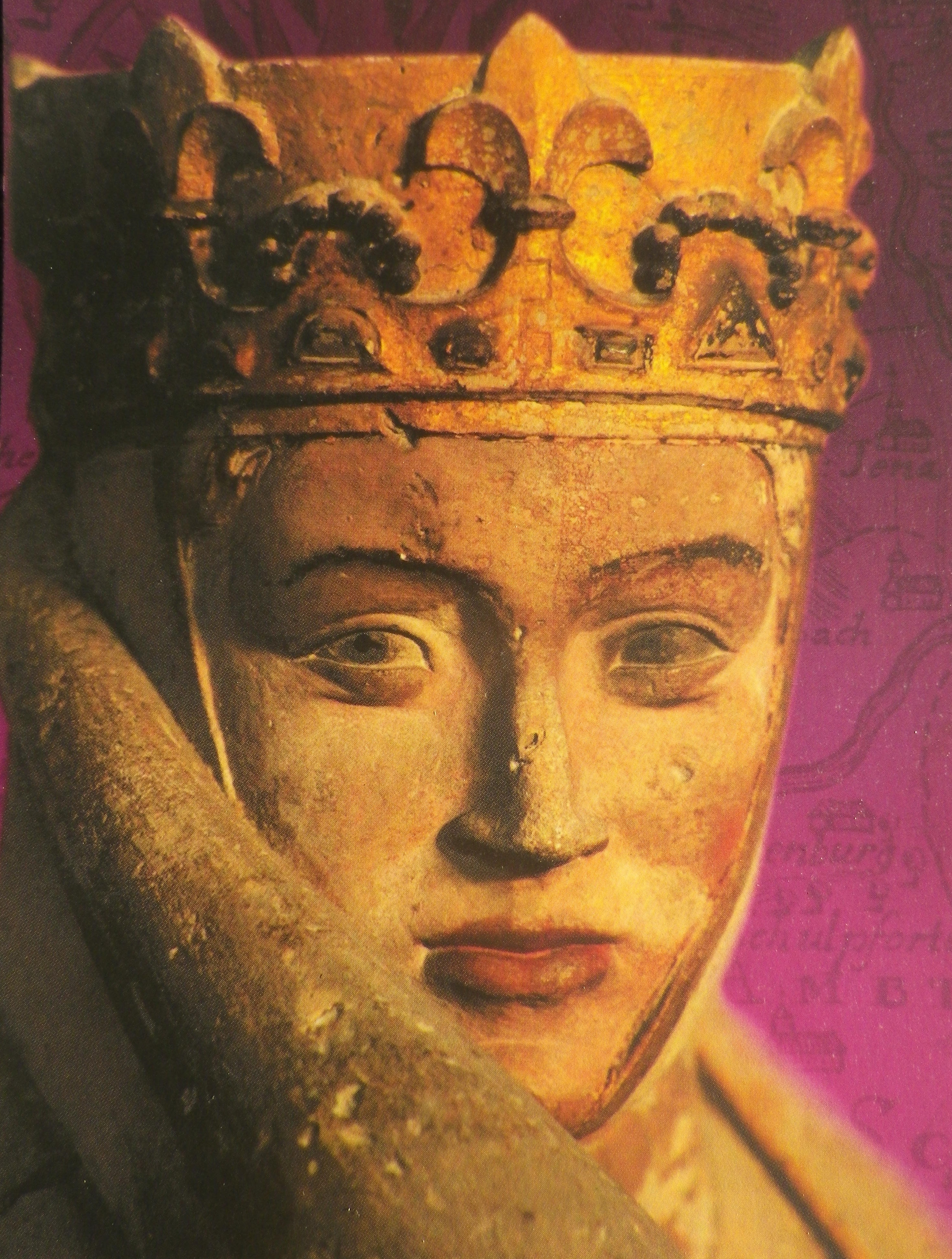
The trail commemorates the Saale-Unstrut wine region in Germany. It is one of two wine regions in eastern Germany, and the one with the northern most vineyards in Germany. These vineyards lie mostly on the south-facing hills and river banks lining the Unstrut and the Saale rivers (not to be confused with the Fraenkische Saale river, further south). Hence this trail partly follows along these two rivers. And the trailhead is located not far from where the two rivers meet, just outside Naumburg.
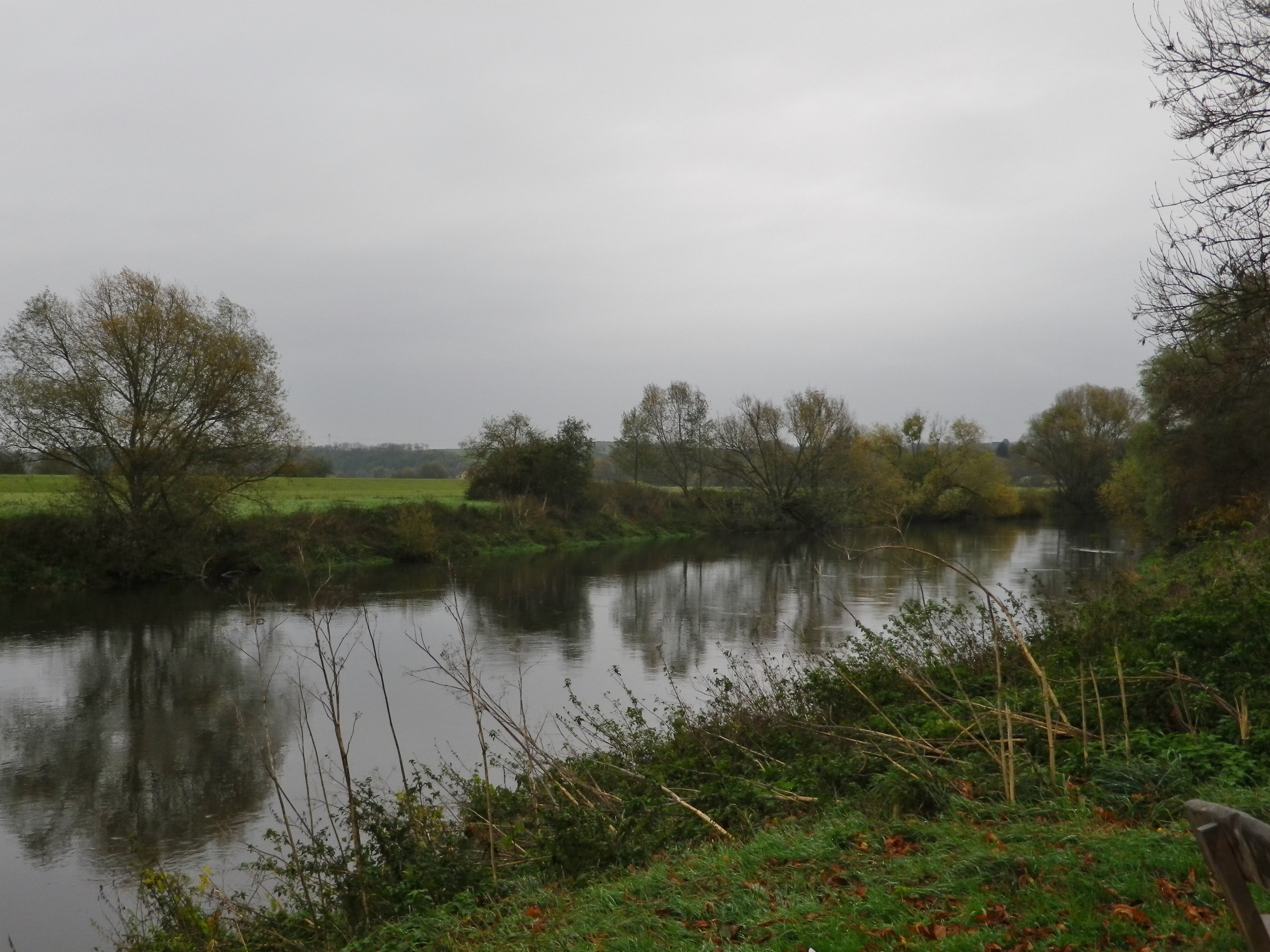
My friend, there to tour historical sites and peruse antique porcelain, graciously agreed to shuttle me to a series of points on the trail, accessible by car, where I could hop out, literally, to take photos. First stop, the trailhead. As evident by the photo below, this part of the trail is also a bicycle path, as were the subsequent sections I saw. It appeared that much of this trail could be biked, with a hybrid or mountain bike, from the looks of the sections I could reach. One caveat though, there are two sections higher up the hillsides, and through woods, that are probably a bit rougher, possibly suitable only for hiking. (There are cycling path alternatives though.)
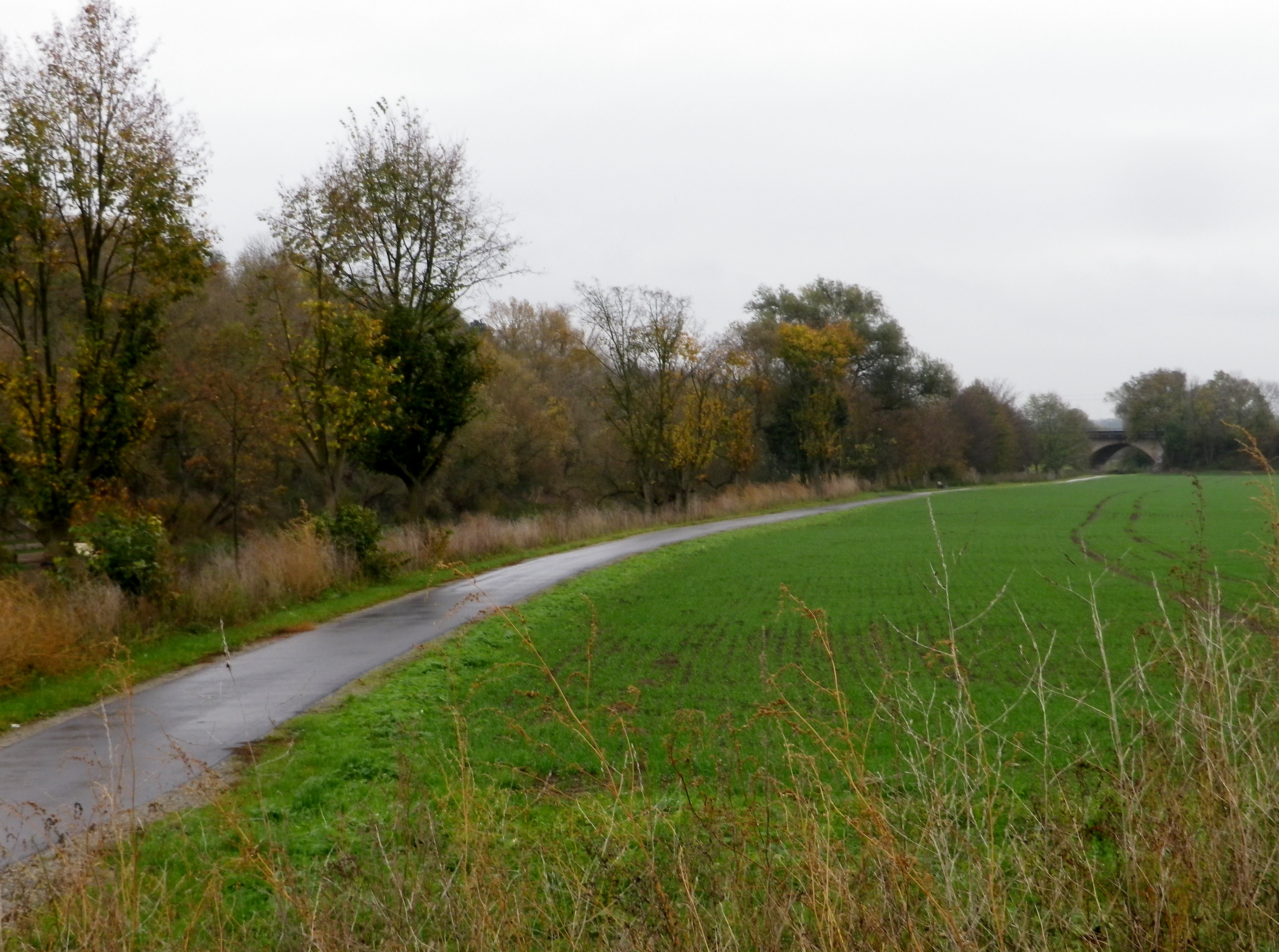
Another nice feature of this trail is the fact that it passes through some of the wine villages and towns in this region. The largest town in the area, Naumburg, has a nicely maintained historic district. It, and the cathedral, are worth a visit. Then there were a couple of villages. Kleinjena, opposite Grossjena on the Unstrut, comes next on the itinerary. Rossbach is a bit beyond Kleinjena. A settlement appropriately named Weinberge “vineyards”, follows, with its collections of vines suspended on the banks facing the Saale. Wine loving hikers will find several small, family run wineries along this sector of the trail.
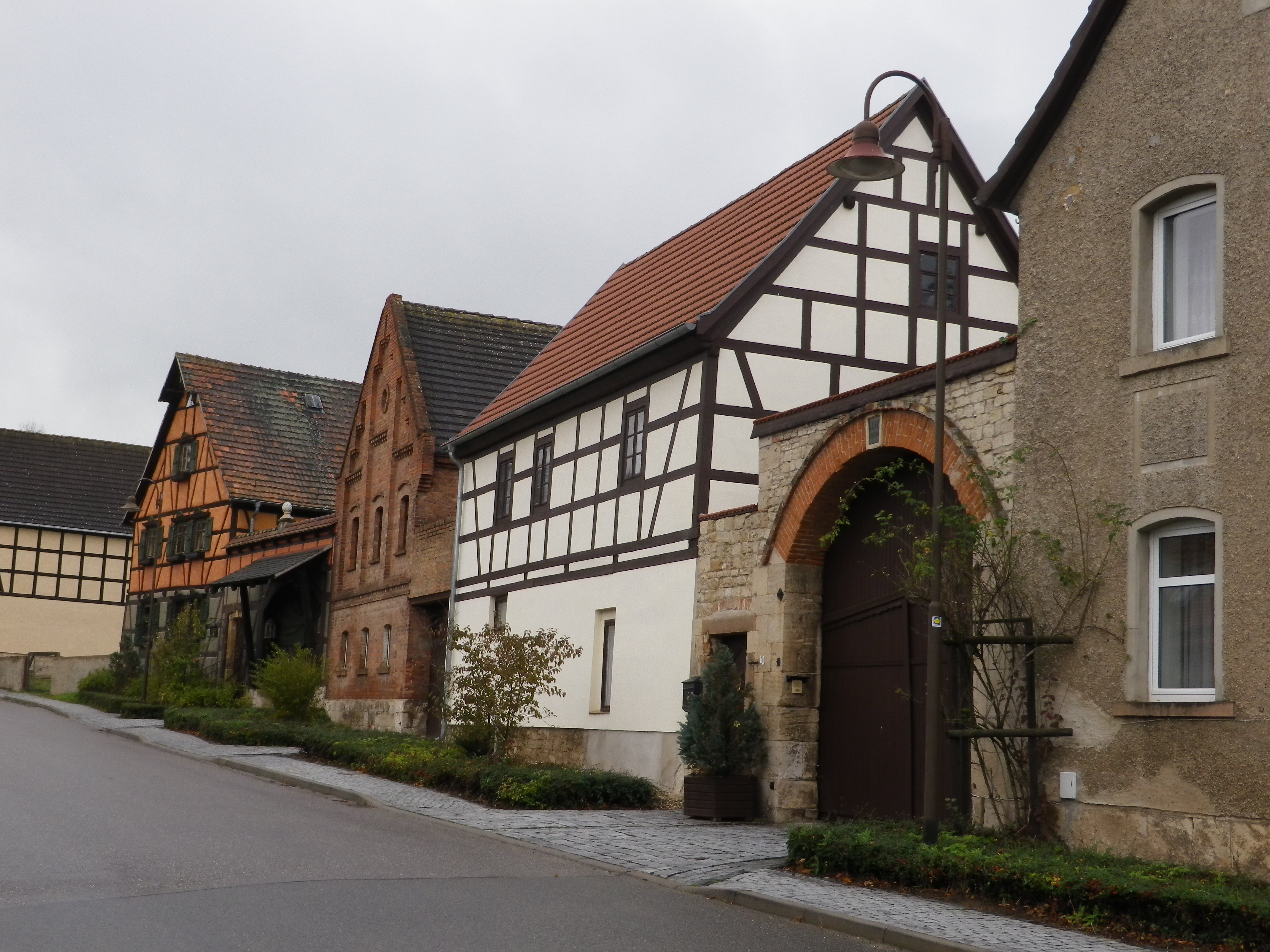
Before reaching Bad Koesen, Kloster Pforta appears on the trail. This old monastery building is now one of the largest local wineries. Its Saalhaeuser vineyard rise above it, and the river passes in front of it. The winery has a cozy a wine tavern collocated with it. Its little terrace looks out over the river, and on a nice day, would be ideal for sipping a glass or two of its wines. (The other large winery, the Naumburger Wein und Sekt Manufaktur, is in fact a still and sparkling wine firm located on the trail a bit further upriver in Henne-Naumburg.)
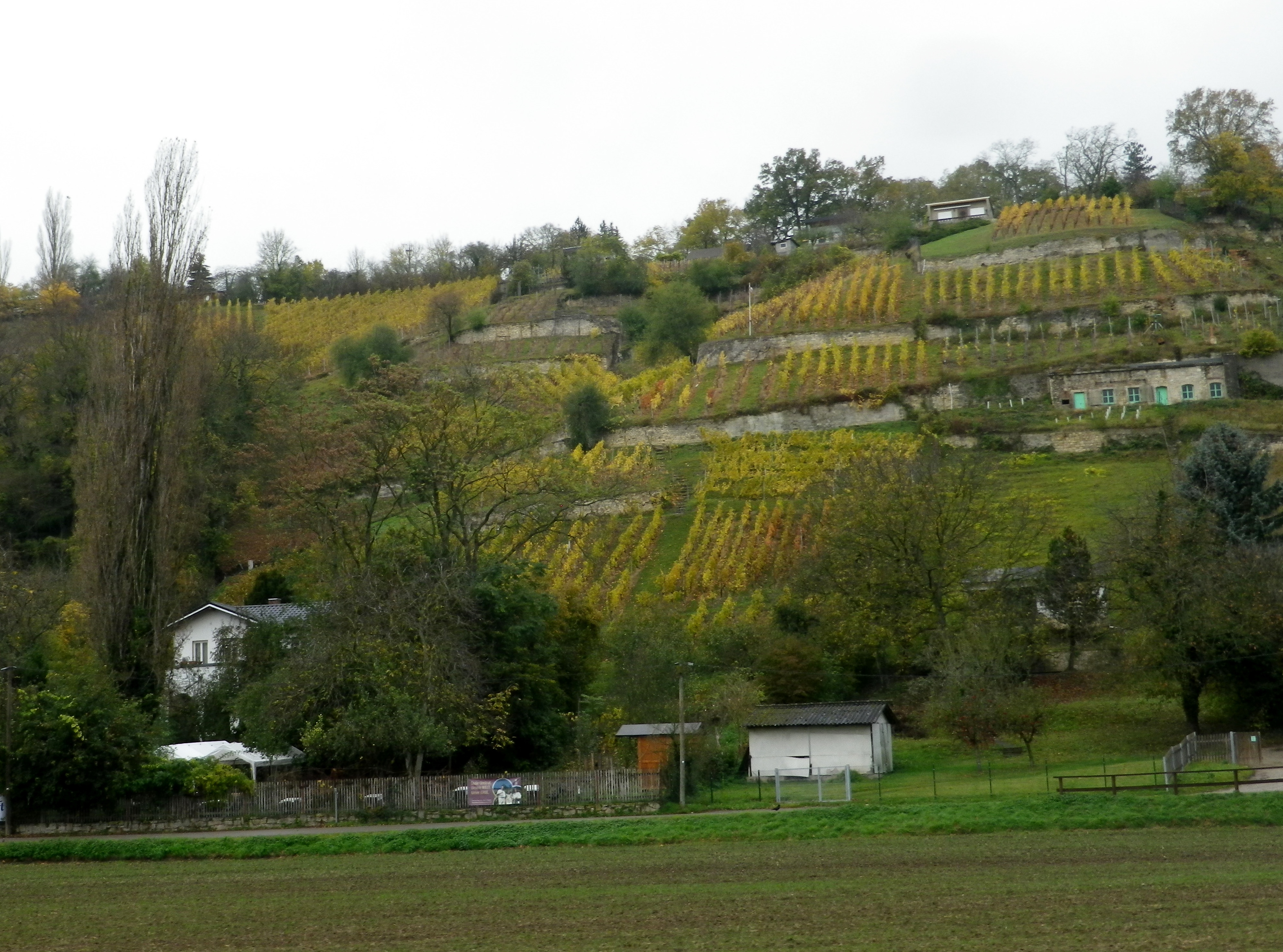
The trail returns to Naumburg via the bridge crossing at Bad Koesen. It is a small spa town on the Saale, to the west of Naumburg. In addition to being a spa town, with all the amenities found in any German spa town, there are several hiking trails in that district, and a least a couple of these focus on the vineyards. At the edge of Bad Koesen lies Schulpforte, formerly a Cistercian monastery dating to the twelfth century. (These were the monks who founded the original winery now found at the Kloster Pforta mentioned above.) After the abbey’s dissolution, the Duke of Saxony founded a school on the property. The impressive complex backs onto the side of a forested hill. The trail continues up that hill and through a forest for about two kilometers, back to Naumburg. (This was the part I could not hobble to, so I can’t write about the trail conditions.)
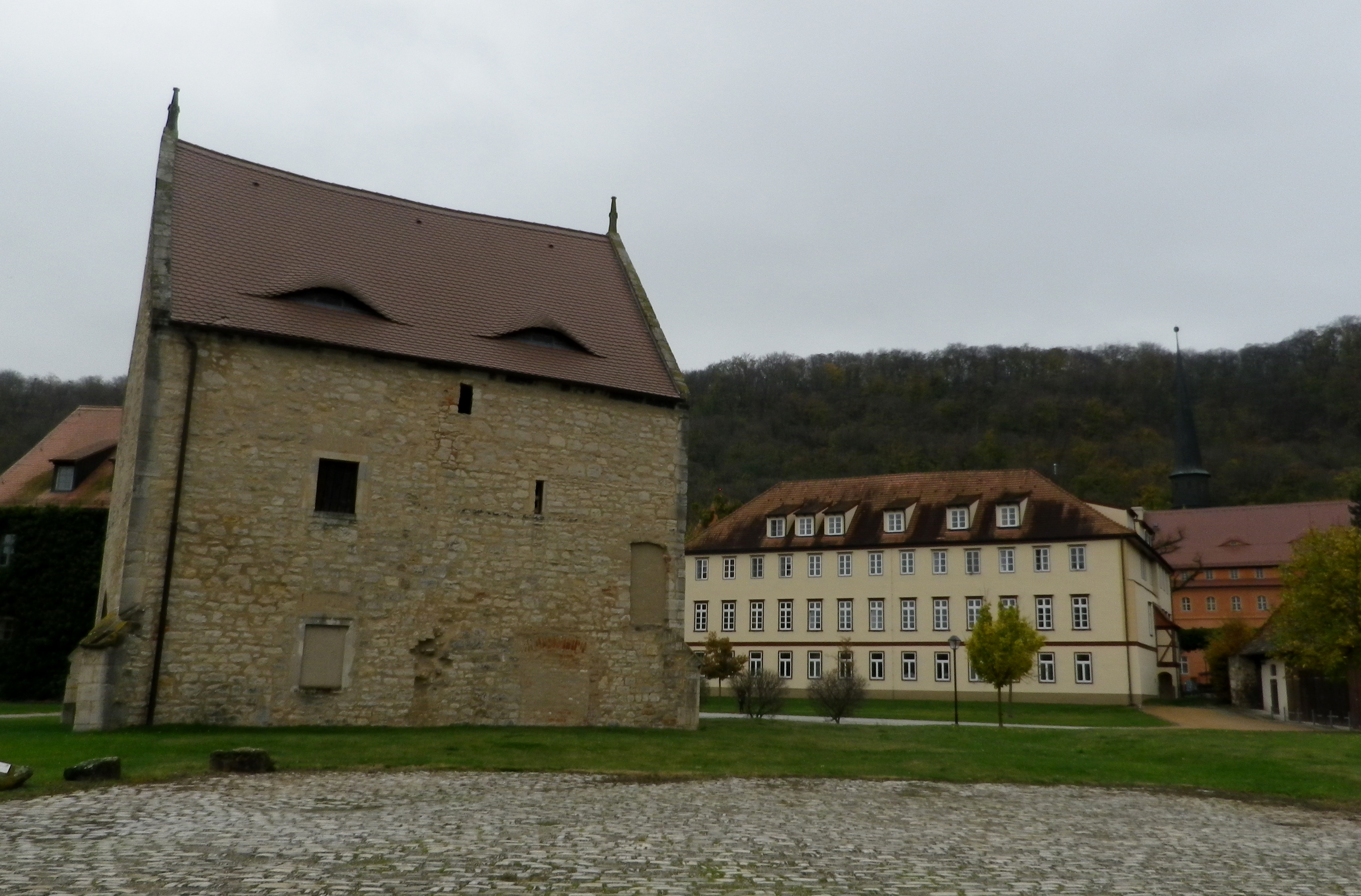
I completed my photo reconnaissance of this trail in less than an hour, vice two days. Thus, I had time to visit Colditz, and get lunch in a wine tavern. Over the rest of the day, and the next, I had opportunities to sample some Saale-Unstrut wines, and finalize plans to return some day to hike in the area, and taste more wines.
Wine Notes: Germany’s Saale-Unstrut
What I Learned
In 998 Emperor Otto III gave vineyards to Memleben Abbey, thus providing the first historic evidence we have of vineyards along the Saale and Unstrut.
The Saale-Unstrut winegrowing region covers some 770 hectares. The landscape is characterized by hills of shell limestone and variegated sandstone soils, often terraced, contained by centuries-old dry-stone walls.
Sited on the 51st degree of latitude, it is the northernmost designated quality wine region in Germany. The Saale Unstrut region extends over three German states: Saxony-Anhalt (639 hectares), Thuringia (108 hectares), and a real northern outlier in Brandenburg (by Potsdam) (8.4 hectares). Overall, the wine region receives about 1600 hours of sunshine, more than Trier in the Moselle wine region but less than Freiburg, in the southern Baden wine region in the Rhine River Valley. It gets about 500 milliliters of rainfall a year.
With over 50 grape varieties, the Saale-Unstrut wine region offers a wide variety of wines. Many of the grape varietals, both red and white, are known to do well in colder, wetter climates.
Of the white varietals, both Pinot Blanc and Müller-Thurgau, which can be surprisingly spicy here, lead by far in terms of production. Riesling, Bacchus, Gruener Silvaner, Pinot Gris, Kerner, Traminer and Gutedel, one of my favorite German whites, follow in order of quantity.
Red wine constitutes about 25 percent of all production, and comes primarily from Dornfelder (by far the most grown and vinified red varietal), followed by Portugieser; Blauer Zweigelt, and Spaetburgunder. Regent, one of my favorite German reds, is growing in popularity. One rare red varietal grown here only in tiny amounts is the André, which is a cross between the Blaufraenkisch (aka: Lemberger) and the Saint Laurent. It is difficult to find a bottle, or even a glass, of this wine.
There are over 50 private wine estates, and the Winzervereinigung Freyburg-Unstrut winegrowers’ association, the state-owned Kloster Pforta (over 850 years of wine-making), and the Wein und Sekt Manufaktur in Naumburg-Henne, and the Rotkäppchen Sektkellerei in Freyburg, both produce sparkling wines.
What I Tasted
2016 Spaetburgunder, Kabinett, Trocken, Winzerverein Freyburg (Unstrut): A dry red wine with medium plus ruby red color; slight red berry nose, with cherry, red berry, vanilla and oak flavors; medium minus tannins, with a smooth finish.
2015 Weiss Burgunder, Qba, Trocken, Landesweingut Kloster Pforta: A dry white wine with light gold color; floral and grass nose, with apricot, floral and grassy flavors; medium minus acidity, with a tart finish.
2015 Weiss Burgunder Kabinett, Trocken, Weingut Herzer (Rossbach): A dry white wine with light gold color; peach nose, with peach and toasted nuts flavors; medium minus acidity.
2015 Gruener Silvaner, Deutscher Qualitaetswein, Halb-trocken, Weingut Herzer (Rossbach): A dry white wine with medium minus gold color; a grass and herbal nose, with same flavors; medium minus acidity.
Source for the first section: https://www.weinregion-saale-unstrut.de/de/9/die-weine/rebsorten
Saale Weinwanderweg: Trail in a Nutshell
Trail Name: Saale Weinwanderweg
Trail Type: Mid-distance circuit hiking trail; well-maintained and mostly smooth surfaces, much of it paved, but no trail-specific marking on the trail
Length:
Total – 25 kilometers/15.5 miles
Convenient to: Leipzig, Germany
Marking:
No trail-specific marking
Trail Description: A very easy, if not a bit long trail, with only one ascent of any challenge, through the largely isolated vineyard areas between Naumburg and Bad Koesen, and those two urban centers. While the scenery is less spectacular than other trails, the attraction here is found in the quiet and very laid-back countryside of this little-known wine region of northern Germany.
Trailhead: Marienring x Hallesche Str, Naumburg, Saxony-Anhalt, Germany
Parking:
Naumburg (just before the river crossing to Henne): a medium sized unimproved lot
Grossjena: K233x Wasserstr, just after the bridge, a small unimproved lot
Bad Koesen: by the sports field at the trailhead, at the end of Hallesche Strasse
Public Transportation Options:
Rail: DB (DeutscheBahn) regional trains serve this area, and the nearest, and undoubtedly largest, hub for services in the county is Leipzig.
Bus: PVG Burgenlandkreis serves the area with a combination of tram and bus lines. Check the website for details.
Suggested Stages: Not applicable
Trail Itinerary-Reference Points: (Counterclockwise)
Naumburg:, Hallesche Str-Hallesche Anger, along the Saale, over river on Hallesche Str; Henne: past the Naumburg Wein und Sekt Manufaktur, road turns to path; Along Bluetengrund toward Grossjena; Cross Unstrut after 500 meters passing the Max Klinger Museum entrance; Kleinjena: Friedrich-Schulze Strasse, Unter den Reussen, path; Rossbach: Pass St Elizabeth church, Am Leihdenberg, Am Meisel, Trift, Weinberge; Pass the Steinmeister vineyards, Pass the Besenwirtschaft Dierking, Along Saale on Weinberge-Saaleberge, Pass Klosterpforta; Bad Koesen: Saalstr, cross the bridge, Naumbergerstr/B87, An der Kleinen Saale; Schulpforte; woods, Panoramaweg, Koesener Str, Michaelisstr, Lindenring, Herrenstr, pass the town hall on the main square, Marienstr.
Representative Trail Photos:
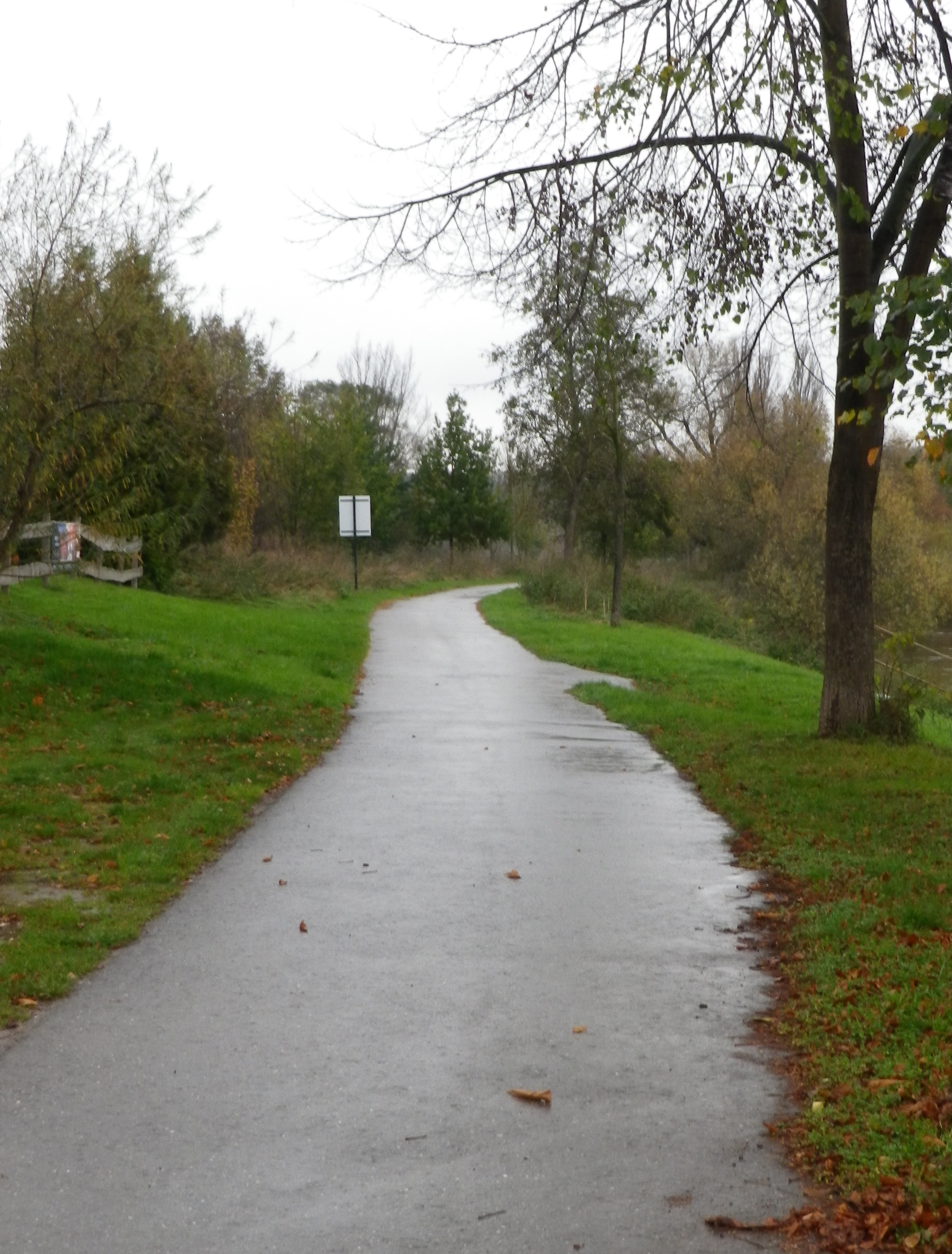
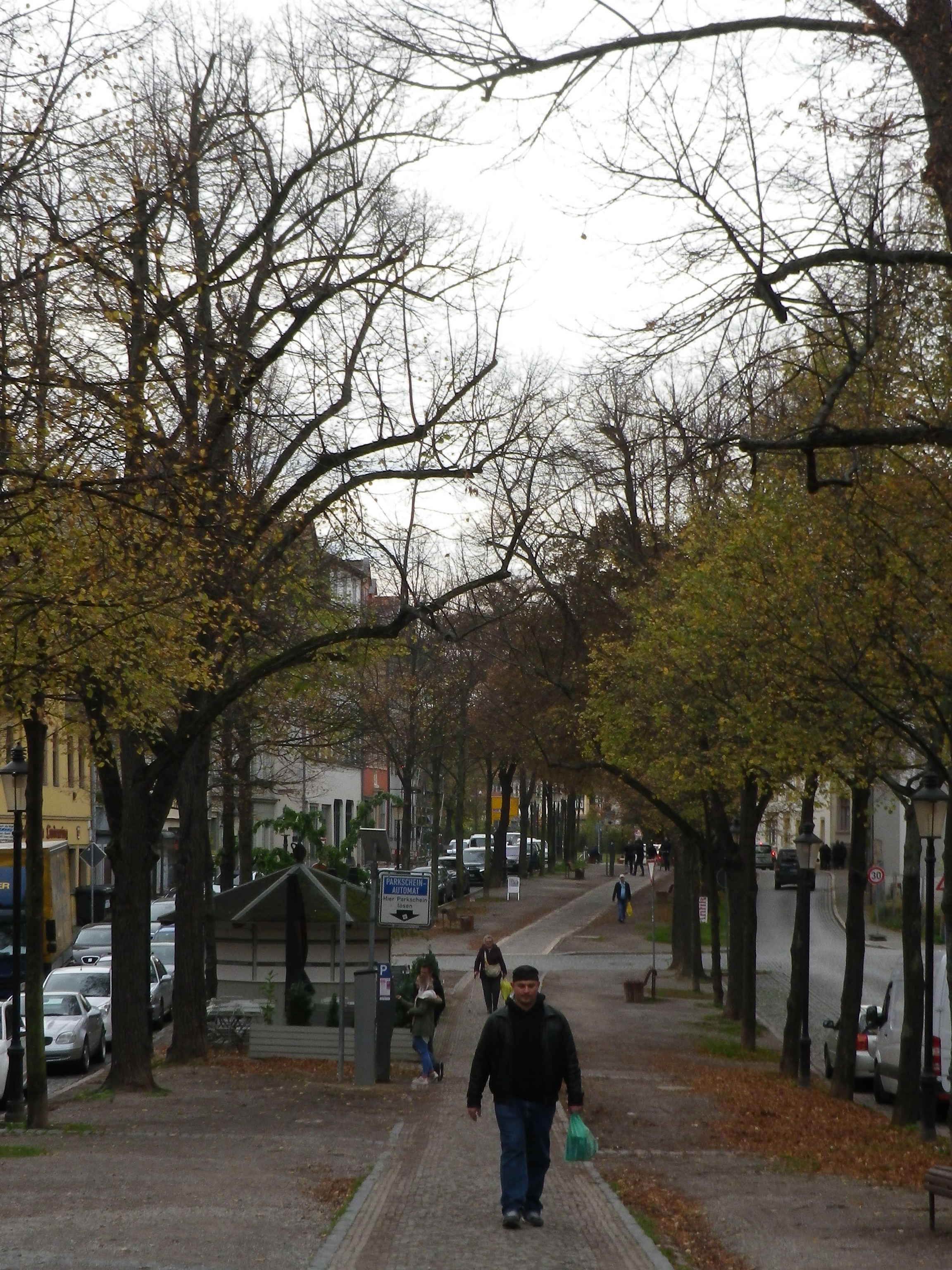
Restrooms:
No public ones observed
Attractions on or near Trail:
Max Klinger Museum, just outside Grossjena, dedicated to a well-known local artist, who also had his own vineyards on the grounds.
The local wine museum is located between Grossjena and Freyburg, in Schloss Neuenburg, a mile or so off the trail.
Tasting along the Trail:
Trail boasts numerous vintner establishments along the way, but the Wein und Sekt Manufaktur in Naumburg-Henne, Kloster Pforta, Schulpforte, and the wineries between Rossbach and Bad Koesen, are your best opportunities to purchase bottles.
Alternative Options:
Hiking:
-Weinlehrpfad Saale-Unstrut, a 12-kilometer (7.4 mile) trail along the vineyards on the Unstrut, starts in Laucha, and finishes by the bridge in Freyburg.
-Weinbergsweg, an 11-kilometer (6.8 mile) circuit around Bad Koesen, some of which is on the Saale Weinwanderweg.
Biking: The long-distance Saale Radweg, while not wine-themed, passes many of the wineries mentioned above, and is used by this hiking trail in part.
Additional Information:
Regional:
http://www.weinregion-saale-unstrut.de/ for wine tourism information concerning this wine region
https://www.saale-unstrut-tourismus.de/ for tourism in general in the Burgenland Kreis county
Trail specific: https://www.outdooractive.com/de/route/wanderung/saale-unstrut/saale-weinwanderweg-ab-naumburg/1405756/#dm=1
Comments:
Due to a knee injury, I did not hike this trail itinerary, so I cannot comment on the ascent or the wooded section of this trail between Bad Koesen and Naumburg.
